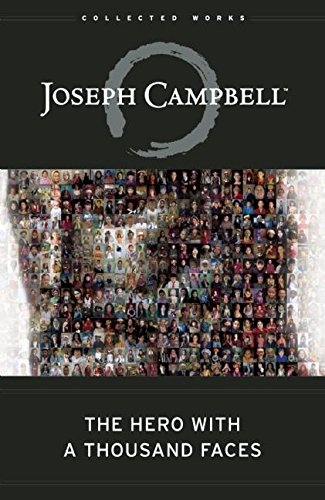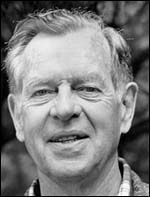The Hero with a Thousand Faces Summary
<1 min read ⌚
 Quick: what do Osiris, Prometheus, Buddha, Mohammed, Jesus, King Arthur, Luke Skywalker, Frodo and Harry Potter have in common?
Quick: what do Osiris, Prometheus, Buddha, Mohammed, Jesus, King Arthur, Luke Skywalker, Frodo and Harry Potter have in common?
Answer: Everything.
They are all variants of the same story.
Joseph Campbell has all the details.
And he shares them under a beautiful and fairly suggestive title: “The Hero with a Thousand Faces.”
Who Should Read “The Hero with a Thousand Faces”? And Why?
“The Hero with a Thousand Faces” combines Joseph Campbell’s revolutionary understanding of mythology with Jungian psychology in a way which makes both of them not just comprehensible, but also irresistibly alluring.
However, even more than people involved or attracted by either discipline, the book should interest novelists and screenwriters, since Campbell breaks down the universal myth of the hero in a way which makes his scheme usable as the background for almost any work of art.
Don’t believe us?
George Lucas used Campbell’s scheme to write “Star Wars.”
About Joseph Campbell
 Joseph Campbell was an American mythologist and author.
Joseph Campbell was an American mythologist and author.
Born in New York City in 1904, he was educated at Columbia University in medieval literature, before continuing his studies in Europe, Paris, and Munich specifically.
Here, influenced by the work of Freud and Jung, the art of Pablo Picasso and Henri Matisse, and the literary works of James Joyce and Thomas Mann, Campbell developed an interest to pursue the study of Sanskrit and Modern Art, something which his alma mater rejected.
Even though this meant that he would never obtain a Ph.D., in 1934, he became a Professor of Literature at Sarah Lawrence College, a position which he held for the next 38 years, until 1972.
He died fifteen years later, just a few months after completing the widely revered series of interviews with Bill Moyers, “The Power of Myth.”
“The Hero with a Thousand Faces PDF Summary”
The basic premise of “The Hero with a Thousand Faces” is remarkably simple: every important myth you can think of shares the same fundamental structure.
And the reason why this shouldn’t strike anybody as odd or fascinating is even simpler: myths are manifestations of humanity’s deepest (and, thus, usually unconscious) urges and needs, fears and desires.
And since humans everywhere share the same psychology, the myths of many cultures through many different times must be the same as well.
Of course, it’s easy to say such a thing and much more difficult to prove it.
Hence, “The Hero with a Thousand Faces,” which not only lays out the structure of the monomyth (in its first part) and the cosmogonic cycle (in its second part) but also offers hundreds of different examples from hundreds of different cultures as evidence to back the scheme.
Since the first part is the much more interesting and influential part of the book – borrowed from Joyce, “monomyth” is Campbell’s term for the underlying scheme of the hero’s adventure – we’ll leave the cosmogonic cycle out of our discussion for now, and, hopefully, extend our summary in the recent future.
Let’s begin with Campbell’s summary of the basic structure of the hero’s journey:
The usual hero adventure begins with someone from whom something has been taken, or who feels there is something lacking in the normal experience available or permitted to the members of society. The person then takes off on a series of adventures beyond the ordinary, either to recover what has been lost or to discover some life-giving elixir. It’s usually a cycle, a coming and a returning.
These – the taking off, the adventures, and the returning – are the three main stages of the hero’s journey, and Campbell dedicates a chapter to each; each of these chapters is further divided into several sections outlining different phases of that respective stage.
Nicely illustrated, the hero’s cycle looks like this:

Of course, not all heroes pass through all stages (in fact, a hero rarely does), but there is basically no myth of a hero which includes an episode that won’t fit into Campbell’s beautiful scheme.
Here’s what it says, broken down, section by section:
#1. DEPARTURE
A hero’s journey starts with a call to adventure: the hero is summoned by someone to venture from his normal world into the world of the unknown for one of many different reasons.
Sometimes, this call is just too strange or dangerous or ethically problematic, so the hero refuses the call. However, after some hesitation and in the presence of just enough evidence (say, Hamlet seeing the Ghost of his Father), the hero eventually agrees.
Once he/she embarks on the adventure, his supernatural aid – the mentor – appears or becomes known to him.
With the help of his aid’s advices or magical talismans, the hero is able to cross the first threshold and finally enter the unknown, the field where the laws of the normal world don’t apply anymore (aka: “that creature was actually a vampire!”)
A minor setback or danger may appear at this stage, such as Jonah – or Geppetto – ending up in the belly of the whale.
OK – not that minor in real-life terms.
#2. INITIATION
But that’s when the real adventure commences!
The Hero is now in a world of “monsters,” treading the road of trials. After several heroic endeavors, he encounters the goddess or the temptress – either way, the woman who will make or break him (remember Gilgamesh?)
Now, comes the center point of the journey: the hero meets the person/figure which holds the ultimate power over his identity or life. Campbell calls this stage the atonement with the father which means that if you had known the contents of “The Hero with a Thousand Faces” and taken it literally before watching “Star Wars,” you would have guessed one of the most famous twists in cinematic history!
Apotheosis is an Ancient Greek word meaning deification, which makes this stage self-explanatory.
The ultimate boon is the goal of the quest: the thing due to which the hero’s journey started in the first place. It can be the Holy Grail or the elixir of life – or just some type of knowledge. But once the hero obtains it, the journey is complete.
Time for coming back.
#3. RETURN
Sometimes, however, the hero may refuse to return: the grass is greener on the other side for me, he thinks, so who cares about the people awaiting the boon.
And sometimes, returning from a journey may be just as difficult as going on one: so, at this stage, the hero must perform the magic flight.
If it doesn’t go well – say, he is wounded or weakened – he may need to be rescued from without by a supernatural aid, a beloved person, or a completely unassuming figure.
Next follows the crossing of the return threshold after which the hero usually shares his boon with his original community.
Now, he is the master of two worlds, both his brutal physical force and his inner spiritual understanding of what it means to live in a human society.
In some cases, he makes one more step upward, achieving the freedom to live by the total annihilation of his former fear of death.
Key Lessons from “The Hero with a Thousand Faces”
1. All Heroes are the Same
2. The Basic Structure of the Monomyth
3. Why All of This Matters
All Heroes are the Same
The main thesis of “The Hero with a Thousand Faces” is there in the book’s title: Osiris and Buddha, Jesus and Muhammad, Luke Skywalker and Harry Potter are all just different manifestation of the same character, the Archetypal Hero.
The Basic Structure of the Monomyth
The universal pattern of the hero’s journey – the monomyth – can be summarized, in Campbell’s words, thus:
A hero ventures forth from the world of common day into a region of supernatural wonder: fabulous forces are there encountered, and a decisive victory is won: the hero comes back from this mysterious adventure with the power to bestow boons on his fellow man.
Why All of This Matters
Because, to quote Campbell, even though “there are of course differences between the numerous mythologies and religions of mankind,” once the similarities are understood, “the differences will be found to be much less great than is popularly (and politically) supposed.”
Campbell’s hope?
Unification in the sense of mutual human understanding.
Like this summary? We’d like to invite you to download our free 12 min app, for more amazing summaries and audiobooks.
“The Hero with a Thousand Faces Quotes”
Regrets are illuminations come too late. Click To Tweet
Not all who hesitate are lost. The psyche has many secrets in reserve. And these are not disclosed unless required. Click To Tweet
Instead of clearing his own heart the zealot tries to clear the world. Click To Tweet
Wherever the poetry of myth is interpreted as biography, history, or science, it is killed. Click To Tweet
Perhaps some of us have to go through dark and devious ways before we can find the river of peace or the high road to the soul's destination. Click To Tweet
Our Critical Review
Soon after the release of the first “Star Wars” film in 1977, George Lucas stated that his script was influenced in large part by “The Hero with a Thousand Faces.”
Since then, numerous different authors have used the same recipe to recreate the story of the hero, in more than one way, in more than one medium.
“Indiana Jones,” and “The Matrix,” “The Beauty and the Beast” and “Lion King,” “Community” and “Lost” – they all owe their structure to Campbell’s monomyth.
Just a few reasons to consider “The Hero with a Thousand Faces” one of the best nonfiction books of all time!
Emir is the Head of Marketing at 12min. In his spare time, he loves to meditate and play soccer.







